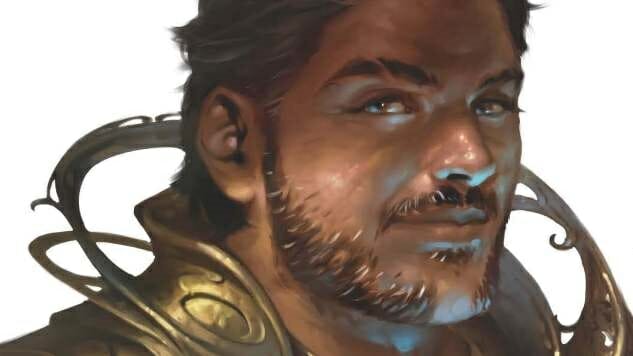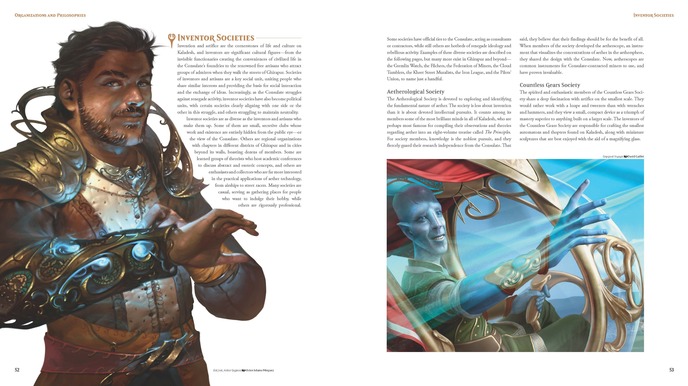An Exclusive Preview of The Art of Magic: The Gathering—Kaladesh Art Book

My favorite part of Magic: The Gathering isn’t that it’s a deep, rich card game with a large competitive scene and a variety of interesting ways to play it. Those are all great reasons to love it, but ever since I learned about the world of Dominaria, the brothers Urza and Mishra, and the very concept of the planeswalker, I have been interested in the worlds of Magic. Now, literally decades later, we’ve left those initial stories that I enjoyed and traveled to a contiguous city world, a world of living metal, a gothic world where monsters and angels fight for domination, and many other places that take us to the strangest edges of the fantasy genre.
After a string of “return” card sets where Magic continued the stories of places that we’ve already played in, we’ve now come to Kaladesh, a steampunk plane with a flavor of precolonial India, and its aether-fueled technological revolution (I’d be remiss here at the top if I didn’t link this take on the plane and its Indian costuming by Shivam Bhatt).
Inventors across Kaladesh are inventing new and exciting steampunk-y objects to improve their lives, do interesting things, or to simply prove that they’re better inventors than their peers. It’s a whole world of science fair nerds going head-to-head, and they’ve divided into groups to better show off their skills.
I spoke to Kimberly Kreines, a Creative Designer on the Story Team for Magic, about the world of Kaladesh, and she told me a bit about the Inventor Societies that make up the structure of the invention-crafting renaissance that is taking that world by storm.
As many long-time players of Magic will note, the game’s “color pie” (meaning the wheel of white, black, blue, red, and green mana that makes up all of the resources of the game) has a structuring effect on many aspects of the game. Mechanically, that means that each color has qualities that it excels at better than the others: white cards are often centered around order and control; red cards are often about smashing things.
The Inventor Societies fit that general structure of the worlds of Magic into a guild-like framework of how individuals of these worlds might want to pursue their inventions. “We wanted there to be somewhere for everybody,” Kreines explained. “All of the inventors aren’t doing the same thing. We have artisans and crafters, and then we have the theorists. We have the people who are building and racing. We didn’t want it to be a one-size-fit-all. We wanted inventor societies that lots of our players, readers, and fans could relate to. It’s kind of like the ‘you be you’ thing, you find where you fit, your group, to add that layer of excitement to the world.”
It’s hard to think about the Inventor Societies without thinking of Magic designer Mark Rosewater’s “psychographic profiles; a kind of shorthand way of thinking about ways that players of the game interact with it. It’s clear, however, that the fiction of Kaladesh is leaning harder into what Rosewater calls the “Vorthos,” or a player who is interested in Magic because of the story and “flavor” of the game. Being in that category myself, I couldn’t help asking Kreines hyper-specific questions about the actual structure of the world. In a world of invention and unfettered creation, are there any downsides? What are the actual concerns of Inventors Societies outside of the proper use of aether? Kreines explained:
